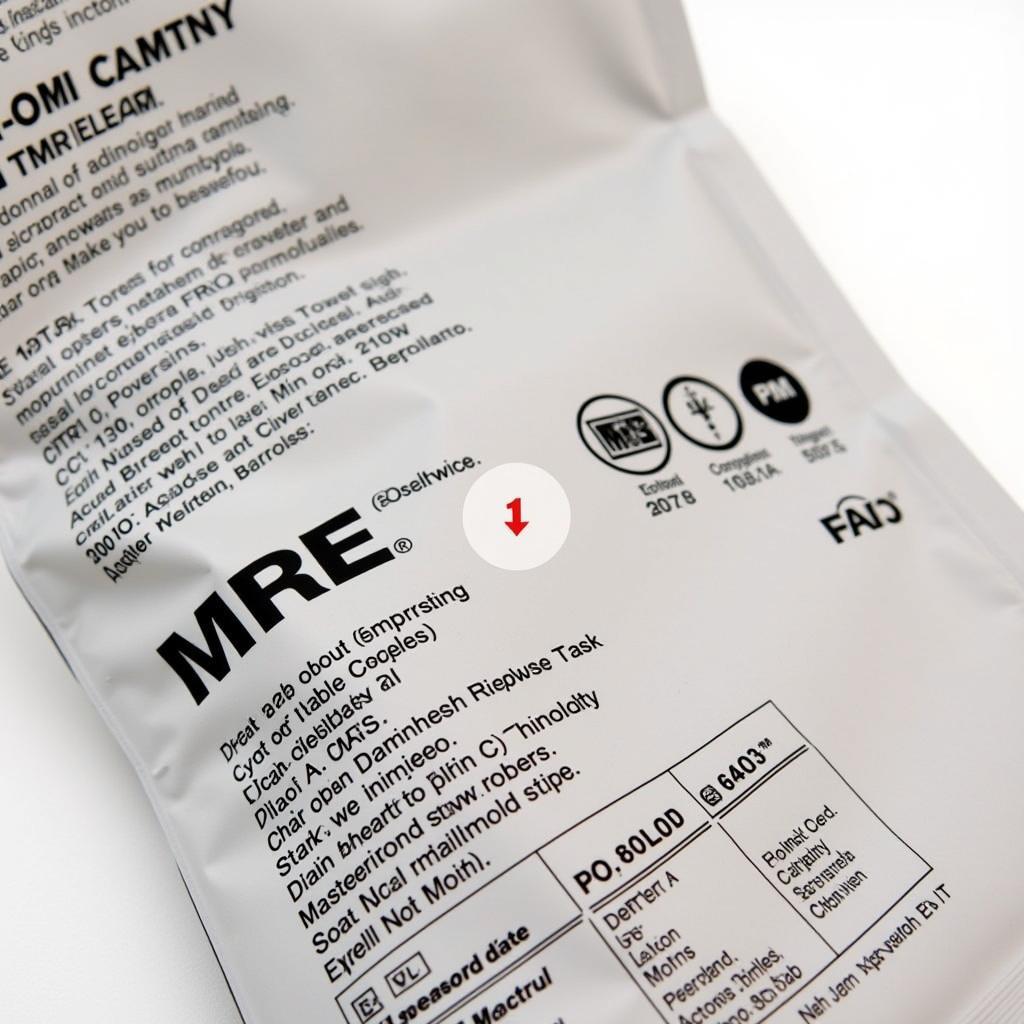Mre Food Storage is crucial for preparedness in emergencies, outdoor adventures, and even everyday convenience. Whether you’re a seasoned prepper or just starting to build your emergency supplies, understanding how to properly store MREs (Meals Ready-to-Eat) can significantly impact their shelf life and palatability. This guide will delve into the best practices for MRE food storage, ensuring you have nutritious and safe meals when you need them most.
Why is Proper MRE Food Storage Important?
MREs are designed for long-term storage, but their shelf life isn’t indefinite. Proper storage plays a vital role in maintaining their quality, nutritional value, and safety. Improper storage can lead to spoilage, nutrient degradation, and even the growth of harmful bacteria. Knowing how to store your emergency food packages like MREs correctly maximizes their lifespan and ensures they’re ready to eat when you need them.
Factors Affecting MRE Shelf Life
Several factors influence how long your MREs will last. Temperature is a primary concern; high temperatures accelerate spoilage. Moisture can also compromise the packaging and lead to mold growth. Exposure to direct sunlight can degrade the nutrients and affect the taste. Finally, pests can be a significant problem if your MREs aren’t stored securely.
Best Practices for MRE Food Storage
To maximize the shelf life of your MREs, follow these essential guidelines:
- Cool, Dry, and Dark: Store your MREs in a cool, dry, and dark place. Avoid areas with fluctuating temperatures, high humidity, or direct sunlight. A basement, pantry, or climate-controlled storage unit are ideal locations.
- Original Packaging: Keep MREs in their original packaging. The packaging is designed to protect the food from moisture, oxygen, and light.
- Rotation: Practice the FIFO (First In, First Out) method. Use the oldest MREs first and rotate your stock regularly. Check expiration dates and use them as a guide.
- Pest Control: Protect your MREs from pests. Store them in airtight containers or sealed bags. Regularly inspect your storage area for signs of pests.
- Avoid Extreme Temperatures: Don’t store MREs in areas that experience extreme temperatures, such as attics, garages, or vehicles.
How Long Do MREs Last?
The shelf life of an MRE depends on the storage conditions. Generally, MREs have a shelf life of 3 to 5 years when stored at room temperature (70°F/21°C). Cooler temperatures can extend the shelf life considerably. However, always check the manufacturer’s date on the package for the most accurate information. You can check out our article about military dry food for more information regarding storage methods.
Extending MRE Shelf Life
While you can’t indefinitely extend the shelf life of MREs, proper storage can significantly prolong their usability. Keeping them in a cool, dry, and dark environment is the most effective way to maintain their quality.
“Storing MREs correctly is like investing in peace of mind. You’re ensuring you have access to nutritious food when you need it most,” says survival expert, Sarah Johnson, Ph.D.
 Checking MRE Expiration Dates
Checking MRE Expiration Dates
What to Do with Expired MREs
While expired MREs may still be safe to eat, their quality and nutritional value will likely have diminished. It’s best to avoid eating expired MREs unless it’s a true emergency. Consider using expired MREs for practice meals or donate them to a local food bank (if they accept them). You could even try incorporating some of the components, like the crackers or condiments, into your regular meals if they are still in good condition. Check our post on ready to eat survival food for other long-term storage options. Looking for something more convenient for everyday use? Check out our recliner food tray. Interested in starting your prepping journey without breaking the bank? We have resources available on free survival food kits.
Conclusion
Proper MRE food storage is an essential part of any preparedness plan. By following these simple guidelines, you can ensure your MREs remain safe, nutritious, and ready to eat when you need them most. Remember, investing in proper storage is an investment in your future well-being.
FAQ
- Can I freeze MREs?
- How can I tell if an MRE is spoiled?
- What are the best storage containers for MREs?
- Do MREs need to be refrigerated?
- Can I store MREs with other emergency supplies?
- What is the average cost of an MRE?
- Where can I purchase MREs?
Common MRE Food Storage Questions:
- How to store MREs long term? A cool, dry, and dark environment is key for long-term MRE storage.
- What happens if MREs get wet? Moisture can compromise the packaging and lead to mold, rendering the MRE unsafe to consume.
- Can I store MREs in a hot car? Avoid storing MREs in extreme temperatures, including hot cars, as this can drastically reduce their shelf life and potentially spoil the food.
Related Resources:
- Check out our other articles on emergency preparedness and food storage.
- Learn more about different types of survival foods.
Need Help?
When you need assistance, please contact us via Phone: 02437655121, Email: minacones@gmail.com Or visit us at: 3PGH+8R9, ĐT70A, thôn Trung, Bắc Từ Liêm, Hà Nội, Việt Nam. We have a 24/7 customer service team.